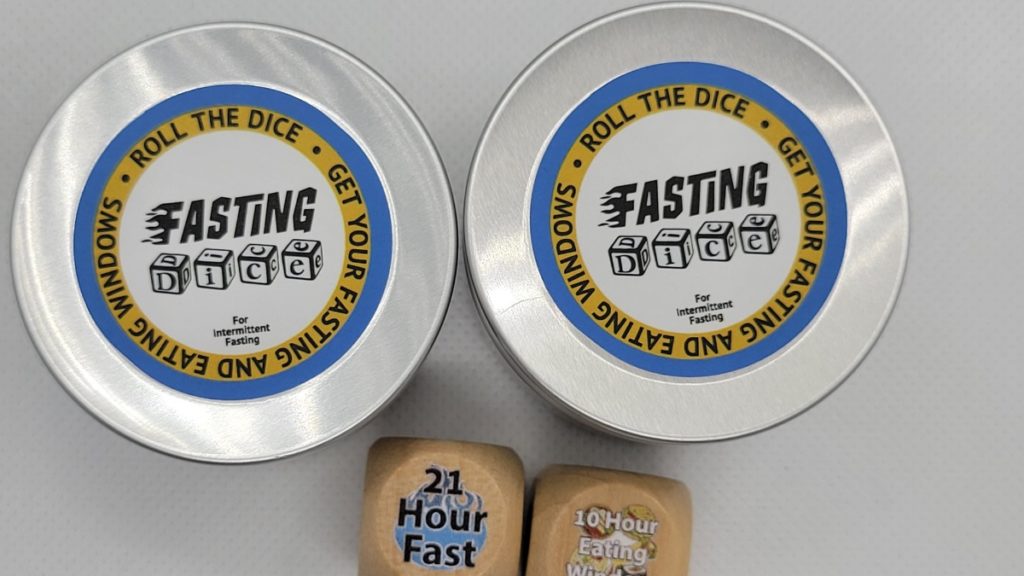Sharing Daniel Reyes’s story of dropping 150 pounds by fasting dice, find out how.
Believe it or not, human beings didn’t always graze around huge kitchen islands stocked with snacks, snag boxes of chicken tenders from the comfort of their cars on the way home or grab a 2-liter bottle of soda at the pharmacy. We used to have to hunt or gather our food, and it wasn’t a 24/7 kind of thing. Eating was opportunistic. So we ate to survive, but mostly we fasted.
Intermittent fasting has become a popular diet of late. It effectively reminds us to fast the same way that some–okay, precious few–people need to be reminded to eat. Deliberate fasting mimics the eating patterns of our ancient ancestors. It’s also the reason that I was able to lose 150 pounds gained from the constant dining/snacking/grazing that’s become part and parcel of the American lifestyle of constant plenitude.
My personal success with fasting inspired me to invent a new diet tool: dice. Yes, dice! Because the only thing missing (besides snacks) from a successful intermittent fasting routine is the element of spontaneity, something that our ancestors experienced regularly. Indeed, spontaneous, intermittent eating was their diet plan. They had to be opportunistic; we have to be creative.
Here’s how Fasting Dice randomizes your fasting routine:
Let’s Roll!
The most common intermittent fasting routine is x time on, x time off, where “on” means you’re allowed to eat. For example, if you allowed yourself to eat for eight hours a day and fast for sixteen, a schedule of noon to 8 p.m. “on” and 8 p.m. to noon “off” would be fairly common. Of course, the timing depends on your lifestyle and the size of the eating window differs from diet to diet. But what all intermittent fasting programs have in common is an assumption that your lifestyle is inflexible and not a lot of fun.
With fasting dice, however, your windows are determined by a roll of the dice. This not only restores the ancient element of the unknown; it turns intermittent fasting into a game, which not only makes it fun but far more likely that you’ll stick with the plan.
Roll-over!
Just as in Vegas, however, our dice can be unpredictable–and sometimes brutal. For example, you might roll a 6-hour eating window and a 12-hour fast. Or a 21-hour fast and a 12-hour eating window.
How often you stick with each roll is up to you. So if a particular schedule is working well, and there’s no reason to interrupt it, you can let it ride. But if you’re getting bored or losing motivation, roll again for a new routine.
Cheat
Athletes and their trainers know that cheating is important. Not only does it interrupt the monotony of a boring prep meal plan, cheat meals give the athlete something to look forward to every once in a while. Psychological research has shown that if someone knows that they have the option to opt out of a stressful situation, they are actually far more likely not to bail out–as long as they believe that they are sacrificing for a purpose.
Like athletes, people who commit to serious weight-loss or even maintenance have to be disciplined. Routine is important. But they also need to feel as though there is an itty-bitty escape clause–that they have a temporary out, if needed. With Fasting Dice, there’s always the chance of rolling a cheat meal. Which is not only pretty exciting when you’ve been fasting a while, but gives the dieter an incentive to mix things up a bit.
Of course, if you keep rolling cheat meals, you’ll eventually defeat the purpose of fasting altogether. My best advice: only roll the dice when you’re getting bored or you’ve got a change in schedule coming up, like a weekend.
Then let the good times roll and the pounds roll off!
